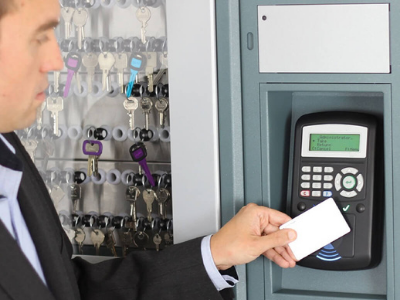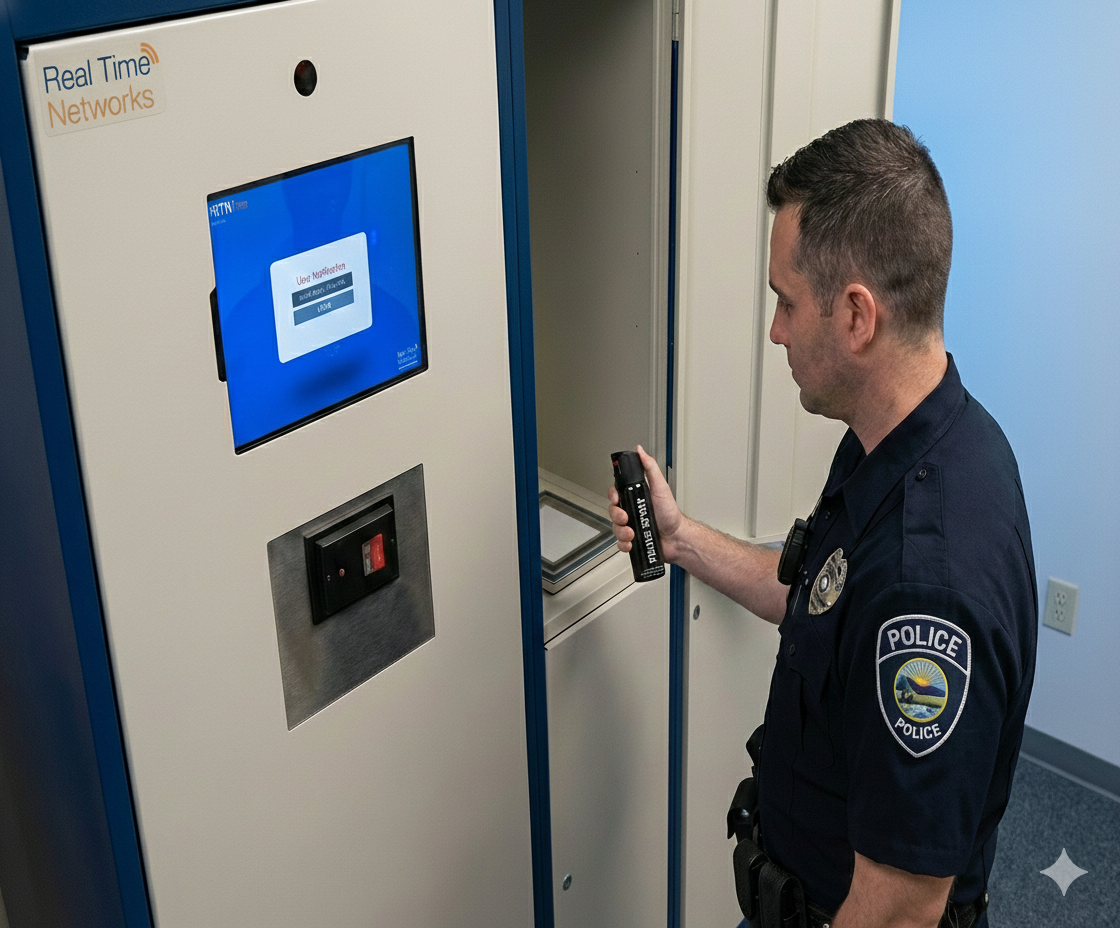By Jay Palter | March 29, 2022
We may live and work in an increasingly digital world, but when it comes to access control, physical keys are here to stay. The main reason for their staying power is that physical keys are very cost-effective for the level of security that they provide.
But one of the big weaknesses in relying on physical keys is you have to trust the right people are signing them out. That concern has led many security-conscious organizations to develop complex, cumbersome, manual key management programs.
Optimizing your key management process can generate powerful insights into your business operations. One of the most effective tools for optimizing key control is an electronic key management system. This article tells you how you can get started optimizing your key control and offers best practices for developing the most efficient and effective key control program possible.
The Benefits of Upgrading to Electronic Key Control
Optimizing your key management with an electronic key management system is an investment that quickly pays for itself. When you manage keys better, you’re also better at managing the entire business processes in which your people use those keys. In addition, you can influence what users do before, during, and after signing out keys.
Electronic key tracking systems also improve business performance in many other key areas.
Compliance
Electronic key systems provide the same high level of security and control during every transaction. Human error won’t cause an accidental security or compliance breach. You can enforce compliance with all of your policies consistently.
Detailed accurate records
An electronic key tracking system records every user interaction, key transaction, and response to checklist items. Nothing is lost or forgotten. You can pull up any record you need in just a few clicks.
User accountability
Because every user interaction with a key system is tracked and recorded. You can ensure your team members’ complete accountability for the keys they sign out and the assets or locations those keys are for. You’ll always know who signed out which key and when.
You can even set key return curfews, triggering an email alert if a key is missing. That can help eliminate costly key losses, which might otherwise lead to exorbitant rekeying costs or even fines in regulated industries.
Efficient day-to-day operations
Installing an electronic key box allows you to redirect your administrators to more important work and leaves the time-consuming process of tracking and distributing keys to an electronic system that never tires and performs each transaction consistently in seconds. In addition, it is available around the clock, never gets sick or fatigued, and is always available, even during emergencies.
What should you know before purchasing a Key Management System?
Check out our guide:
'Key Management Purchasing Checklist'
How You Can Start Optimizing Your Key Control Program
Those benefits to electronic key control sound great, but readers will rightly ask what they can do right now that will help optimize their key control program. Here are six things you can do to get started.
1. Inventory everything
You can’t optimize your control over keys if you don’t actually know where everything is. Bad actors, especially internal ones, thrive on uncertainty and being able to steal and manipulate assets undetected. So any good management update should begin with a top-to-bottom inventory of every asset you care about.When it comes to key control, that means inventorying standard keys and masters and sub-masters if you’re using a master key system. It often also means conducting an inventory of all the assets those keys secure, such as storage closets, equipment stored in those closets, and vehicles.
2. Set key access permission
Now that you have a master list of every key and asset you’re going to track, you can assign permissions to them. We recommend you do this in an electronic key control system, but you can do a basic version of this task in a spreadsheet if you haven't purchased one yet.
List every individual or group that needs specific levels of access to keys. For example, maybe you want maintenance staff to be able to sign out your chemical storage room keys, but with a 30-minute curfew. And then you want your health and safety officer to have unrestricted access to those same keys. Record each.

3. Identify key distribution site
When you’re getting more serious about using an electronic key management system, you need to think about the most efficient locations to distribute keys. Think about where you can locate key cabinets to be as close to their point of need as possible. If you streamline your transaction process with an electronic system, but locate the key control cabinet on the other side of your facility, you may not actually improve net efficiency.
4. Select technology to manage keys
Evaluate different electronic key control systems to ensure you select one that fits your needs. Some questions to ask include:- Does it generate the reports we need?
- Does it allow the customized access rules we want?
- Can't physically store the volume of keys and keyrings we work with?
 5. Document key control policies
5. Document key control policies
Getting the right technology in place is only part of a key management program. An efficient program requires a combination of tools and policy. Document a clear, easy-to-understand key control policy that all of your staff can follow. Set out the roles and responsibilities for key management.
6. Configure report
One of the most powerful features of a key control system is its reports. Electronic systems can collect and analyze a large volume of information about how people in your organization use keys. Then, run reports that give you the insights you need to optimize your process further.
For example, you could run a report on lost keys. Does one business unit lose a large percentage of your keys? Or are losses happening all on one shift? Knowing who loses keys and when and where it’s happening can give you the insights you need to deter key loss and avoid unnecessary rekeying expenses.
Some Best Practices for Optimizing Your Existing Key Control Program
What about if you already have a key control program in place but aren’t sure what next steps you should take to optimize it? Here are some best practices you should consider that will take your key control program to the next level. They’re especially useful if you’re managing keys in high-security environments.
Develop a robust training program
New technology is useless if your personnel don’t know how to—or don’t want to—use it. A rigorous training program can help them understand how a new electronic key control system not only helps the organization but makes their lives easier.
Keys will be more available. Colleagues will be more accountable for returning keys on time. Transactions will be faster, too, letting them get on with their day.
Make key system training part of your new hire onboarding process. As with other important business process training, you want to establish good habits as early as possible.
Set a lock change schedule
In high-security environments, an unchanged lock is a vulnerable lock. Therefore, regular lock changes on high-value targets should be part of your physical security budget. If you hand out physical keys to your employees that aren’t kept in an electronic key management system, then you may even want to consider rekeying every time an employee leaves since they potentially could have keys duplicated outside of work.
Use restricted keys to prevent unauthorized duplication
If the threat of employees duplicating keys is too great, you should consider deploying restricted keys and locks for your high-value assets. Restricted keys are uniquely marked and cut from patented key blanks not available to the general public. They’re considerably more expensive than standard keys, but the tighter control over blanks provides an added layer of security.
Schedule regular audits of keys and users
As security professionals are well aware, no system is perfect. That includes electronic key cabinets. While human error is a marginal problem, you should still schedule periodic audits of users, keys, and protected assets when you use these systems. While audits take time, they’re considerably less costly in time and money than unnecessary rekeyings.
Optimizing Key Control Pays for Itself
Optimizing and improving security processes is an important business practice. It can be time-consuming, but with a little organization, the effort will be well worth it. Optimizing your processes using an electronic key control system will allow you to generate valuable business intelligence.
Insights gathered from those reports will inform the next round of optimization you want to undertake. You’ll create a snowball effect where each round of improvements leads to more and greater improvements down the road.
Want to learn more about designing key control programs?
Check out our Ultimate Guide to Key Control in the Workplace
Subscribe to our blog

Jay Palter
Vice President of Marketing & Partnerships




